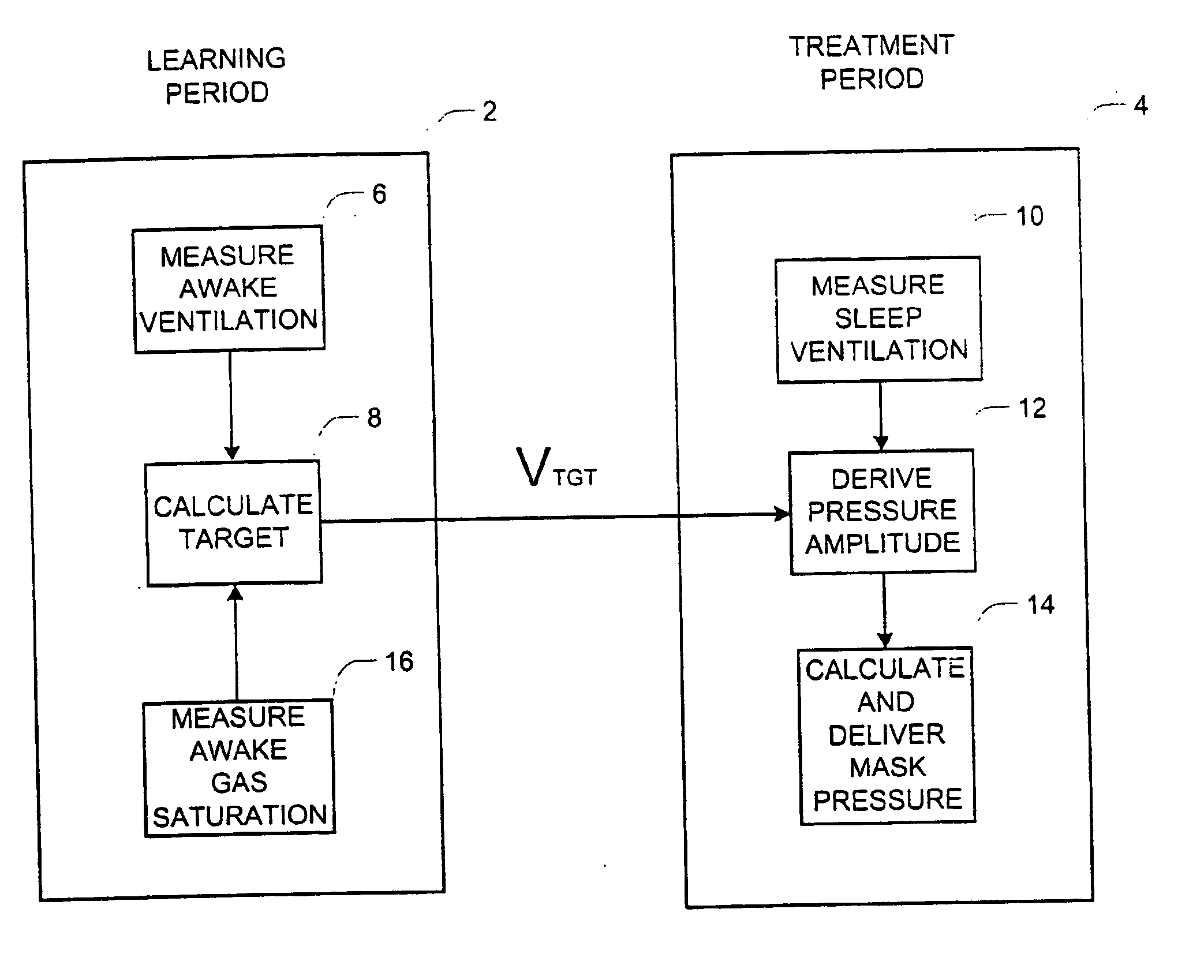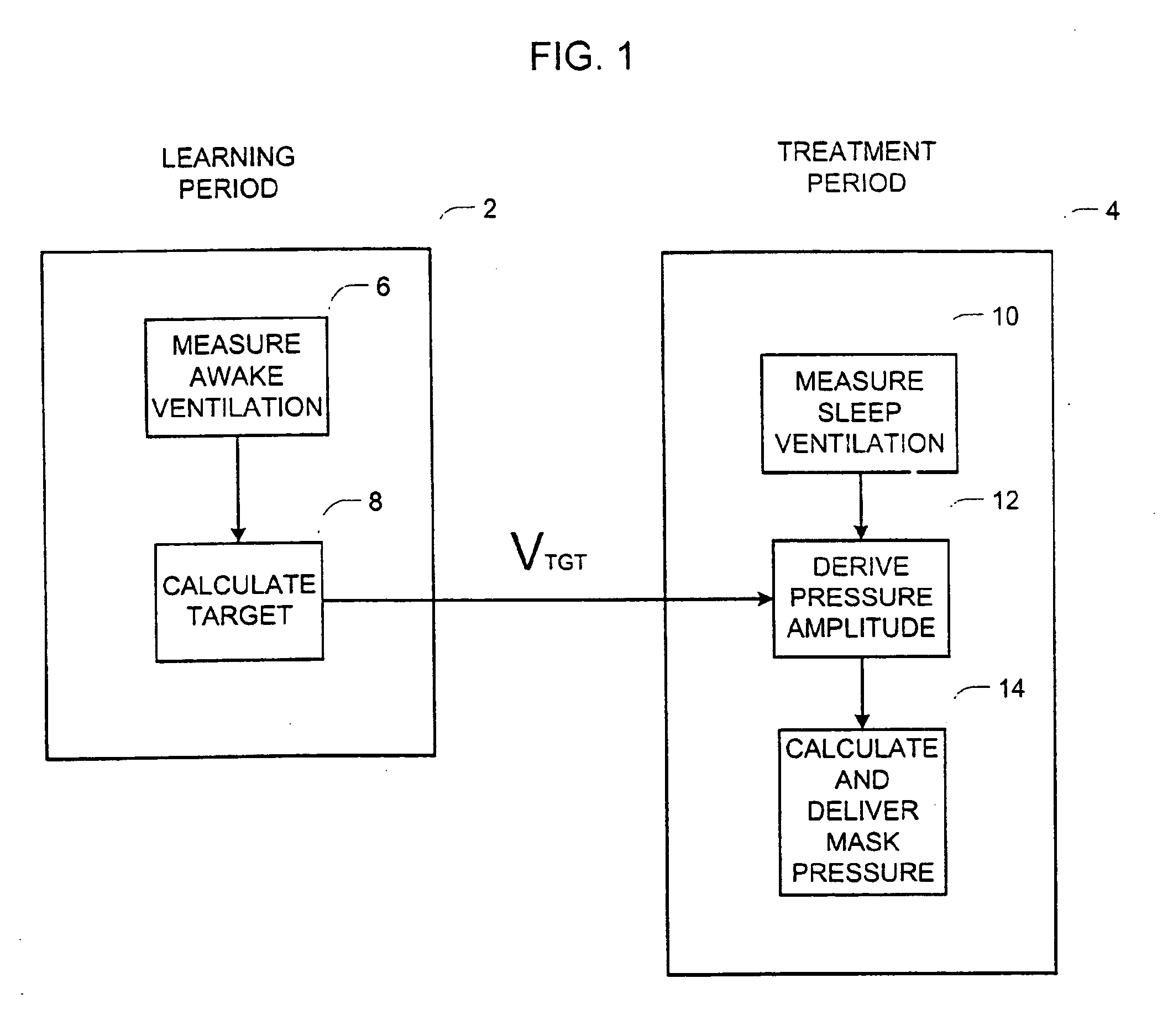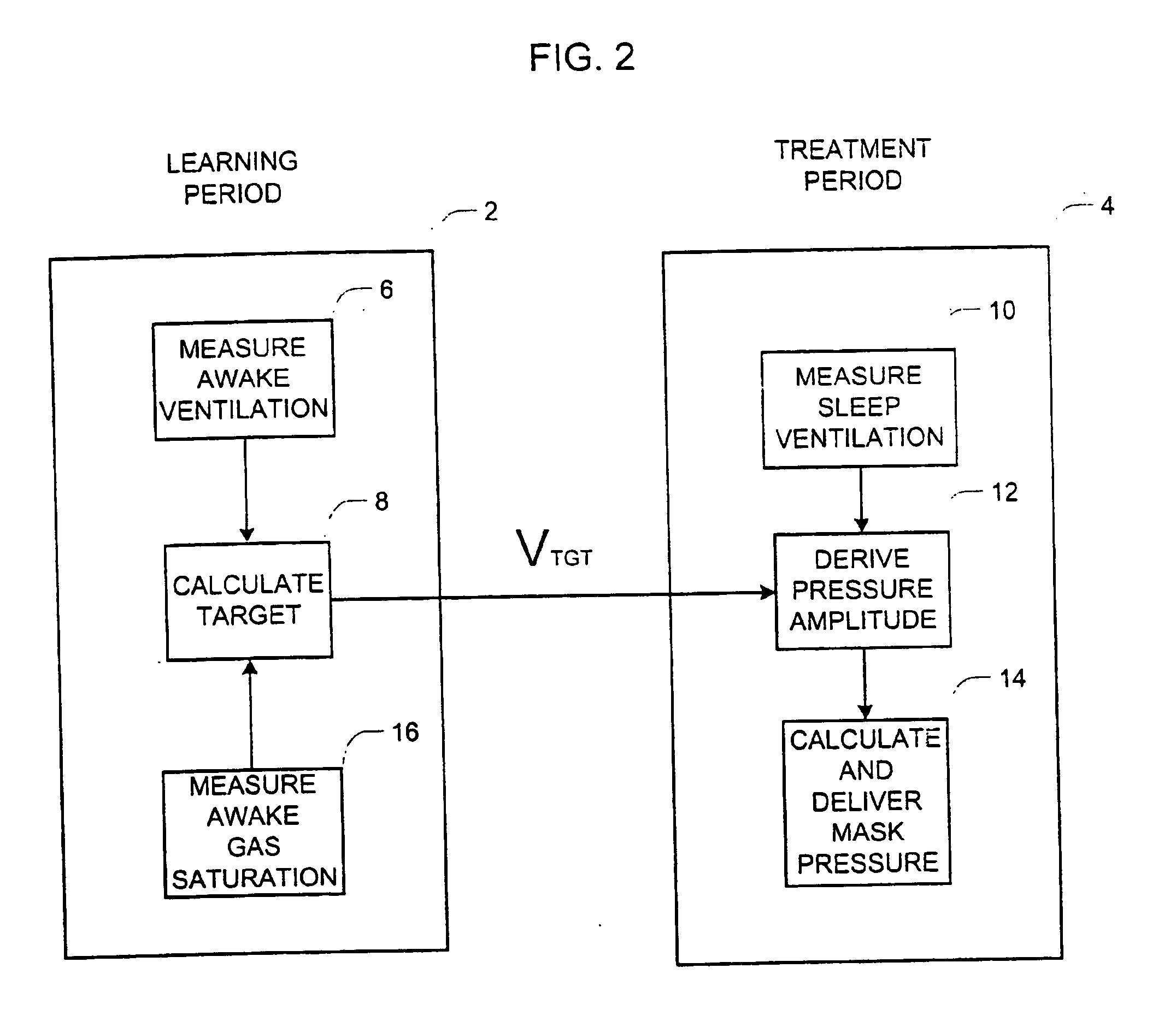Determining suitable ventilator settings for patients with alveolar hypoventilation during sleep
- Summary
- Abstract
- Description
- Claims
- Application Information
AI Technical Summary
Benefits of technology
Problems solved by technology
Method used
Image
Examples
third embodiment
A third embodiment is useful in the case where the subject's breathing changes slowly with time by a large amount during the learning period, for example, if the subject is initially very anxious, later breathes normally, and finally falls asleep and desaturates. To address this situation, measurements of oxygen saturation are taken with an oximeter along with measurements of spontaneous ventilation. At the end of the learning period, a graph of oxygen saturation versus spontaneous ventilation is drawn. Then, using this graph, the target minute ventilation is taken as a fixed fraction (typically 90%) of the ventilation that on average achieves a desired arterial oxygen saturation.
The basis for this method is that some subjects, for example, those with obesity hypoventilation syndrome, fall asleep easily for short periods during the learning period. During these short periods, the subjects will reduce their ventilation and desaturate. Thus, it is intended that the method use only dat...
PUM
 Login to View More
Login to View More Abstract
Description
Claims
Application Information
 Login to View More
Login to View More - R&D
- Intellectual Property
- Life Sciences
- Materials
- Tech Scout
- Unparalleled Data Quality
- Higher Quality Content
- 60% Fewer Hallucinations
Browse by: Latest US Patents, China's latest patents, Technical Efficacy Thesaurus, Application Domain, Technology Topic, Popular Technical Reports.
© 2025 PatSnap. All rights reserved.Legal|Privacy policy|Modern Slavery Act Transparency Statement|Sitemap|About US| Contact US: help@patsnap.com



